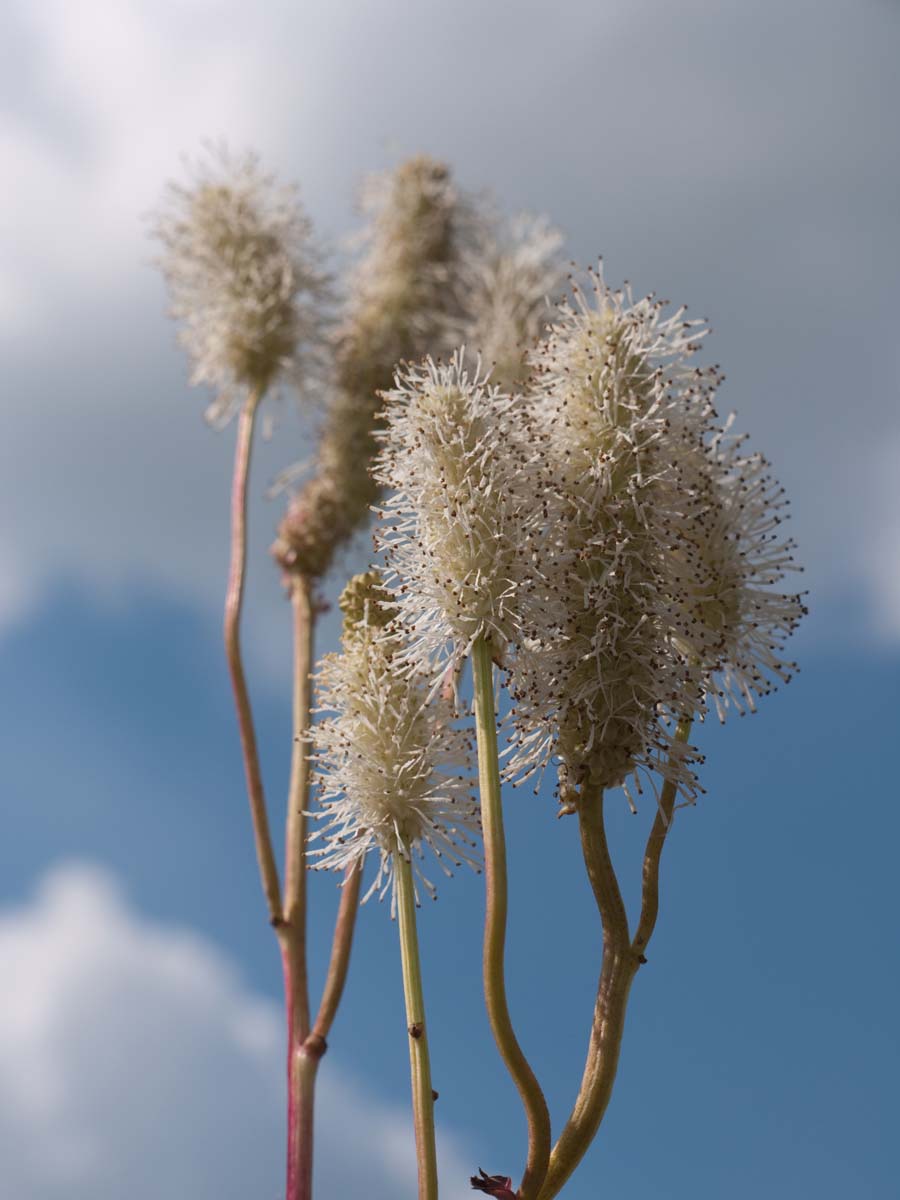Description
Sanguisorba – Burnet – Poterium –
There are 15-20 rhizomatous perennials or small shrubs, in the Rosaceae family, in this genus. They naturally occur in damp meadows, with a few form dry, grassy or rocky sites, in temperate and color regions of the northern Hemisphere. They produce, alternate, pinnate leaves, with mostly oblong to elliptic, serrated,, neatly veined , 7-25 leaflets, which in some species is glaucous. The leafy, wiry stems bear dense or loose, bottlebrush like, terminal spikes of small, fluffy 4 small petaled flowers, with red, pink, white, or greenish white sepals, and prominent stamens. Burnets are suitable for growing in a herbaceous or mixed border, and for naturalizing in a damp meadow garden or by water. Many species provide unusual flowers and foliage for cutting.
Grow in any moderately fertile, moist but well drained soil that does not dry out, in full sun or partial shade. Taller species usually require support. Divide in spring and/or autumn.
Prone to Cercospora leaf spot, and larvae of some Lepidoptera.
S. canadensis – Canadian Burnet – This vigorous, spreading, clump forming, rhizomatous perennial from Northeastern North America grows 6′ feet tall and 18″-3′ feet wide. From upright, simple or branched stems it carries pinnate, hairy leaves, to 10″ long, each composed of 7-17 oblong-lance-shaped to ovate leaflets. From midsummer to mid autumn, long “cones” of green buds open from the bottom up, to form bottle-brush-like spikes, to 8″ long, of small, fluffy white flowers. Loves full sun and moist soil.
Zones 3-8





